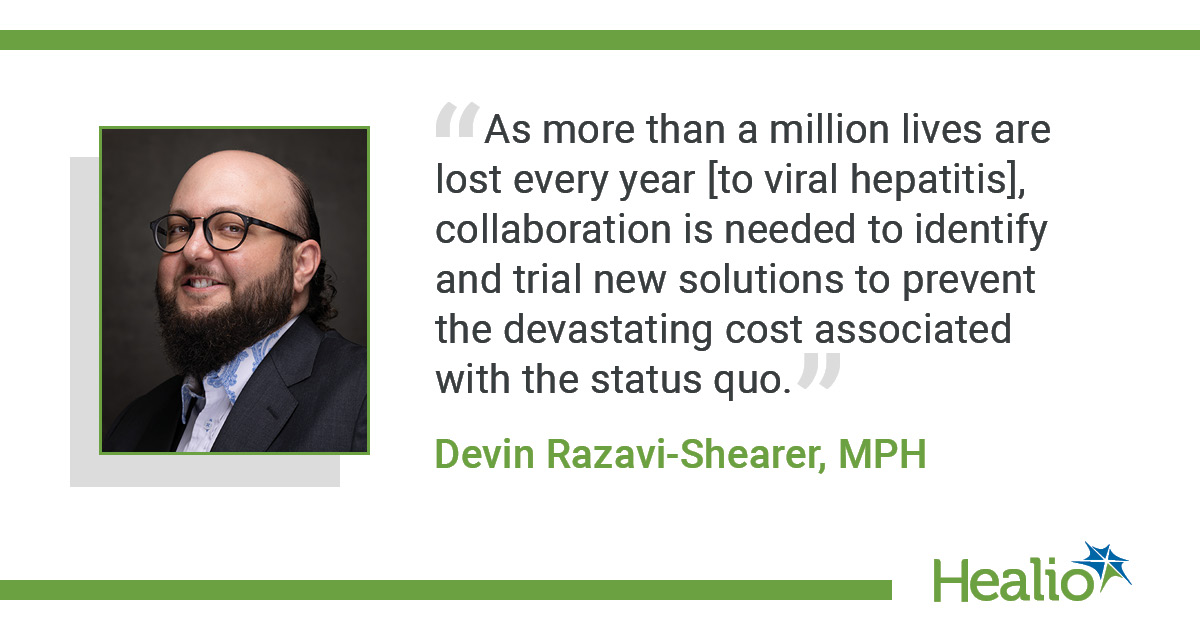Global HBV prevalence dips below 260 million; not ‘large enough’ for 2030 elimination goal
Key takeaways:
- Hepatitis B virus affects more than 3% of the global population or roughly 257.5 million people.
- Only 14% of HBV infected patients were diagnosed in 2022, and just 8% of those eligible had received treatment.
Global burden of hepatitis B virus is estimated to be 257.5 million individuals, according to recent data in Lancet Gastroenterology & Hepatology, which, although lower than current WHO estimates, falls short of 2030 elimination targets.
Additionally, the researchers reported that only 14% of HBV infected patients had been diagnosed in 2022, and just 8% of patients eligible for HBV treatment had received treatment.

Image: Adobe Stock
Although previous literature reviews have placed worldwide prevalence of HBV infection at approximately 292 million individuals, the Polaris Observatory Collaborators, led by Devin Razavi-Shearer, MPH, associate director of hepatitis B and Delta projects at the Center for Disease Analysis Foundation, noted that “there is a paucity of reliable nationally representative prevalence data due to the limitations of these approaches.”
They added that “providing an accurate cumulative incidence of chronic HBV infection requires the assessment of dynamic changes in vaccination programs and HBV treatment uptake, which are not always reflected in meta-analyses or literature reviews that are based on older studies.”
To better determine HBV infection prevalence, prophylaxis coverage and the proportion of individuals diagnosed and treated at national, regional and global levels in 2022, the Polaris Observatory Collaborators combined traditional meta-analysis and national expert interviews from 170 countries with a dynamic Markov model.
The researchers also calculated estimated future incidence of morbidity and mortality without further interventions.

According to study results, researchers estimated a global HBV prevalence of 3.2% or approximately 257.5 million (95% UI, 216.6-316.3) individuals living with HBV infection. Among these individuals, the researchers estimated that 36 million had been diagnosed, yet only 6.8 million of the estimated 83.3 million individuals who were eligible for treatment had received it.
Additionally, global HBV prevalence among children aged 5 years and younger was estimated to be 0.7% or approximately 5.6 million (95% UI, 4.5-7.8) children living with HBV infection. According to the data, although 85% of infants had received the recommended three-dose HBV vaccination before 1 year of age, only 46% had received a timely birth dose HBV vaccine and just 14% had received the accompanying hepatitis B immunoglobin with their full vaccine regimen.
The researchers also reported that only 3% of mothers with a high HBV viral load had received antiviral therapies to curb mother-to-child transmission.
“Unfortunately, our estimates of the current levels of prophylaxis, diagnosis and treatment at the national, regional and global levels provide yet another warning about the insufficient rate of progress towards elimination of HBV,” the researchers wrote. “Although gains have been made since our previous publication in 2018, none have been large enough to alter the global trajectory of failing to meet the 2030 elimination targets.”
They added: “We have 7 years left to make rapid progress towards eliminating viral hepatitis as a public health threat by 2030. As more than a million lives are lost every year, collaboration is needed to identify and trial new solutions to prevent the devastating cost associated with the status quo.”
